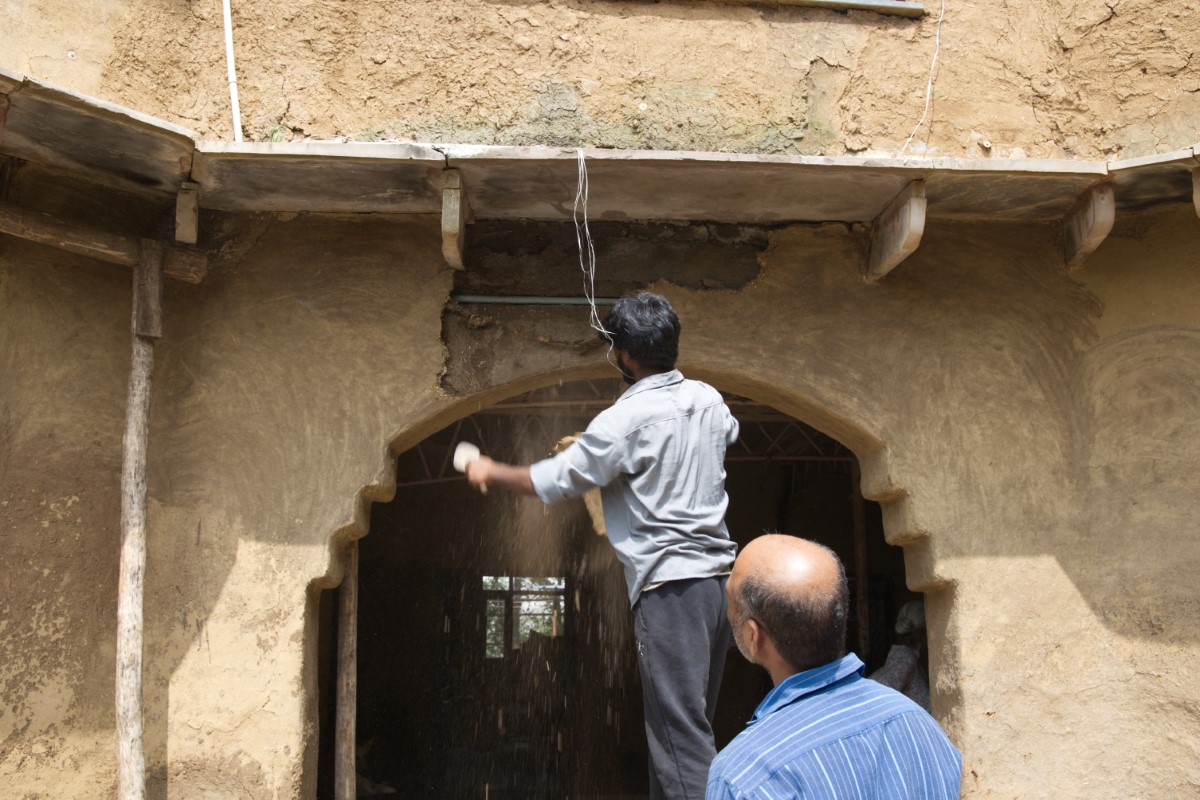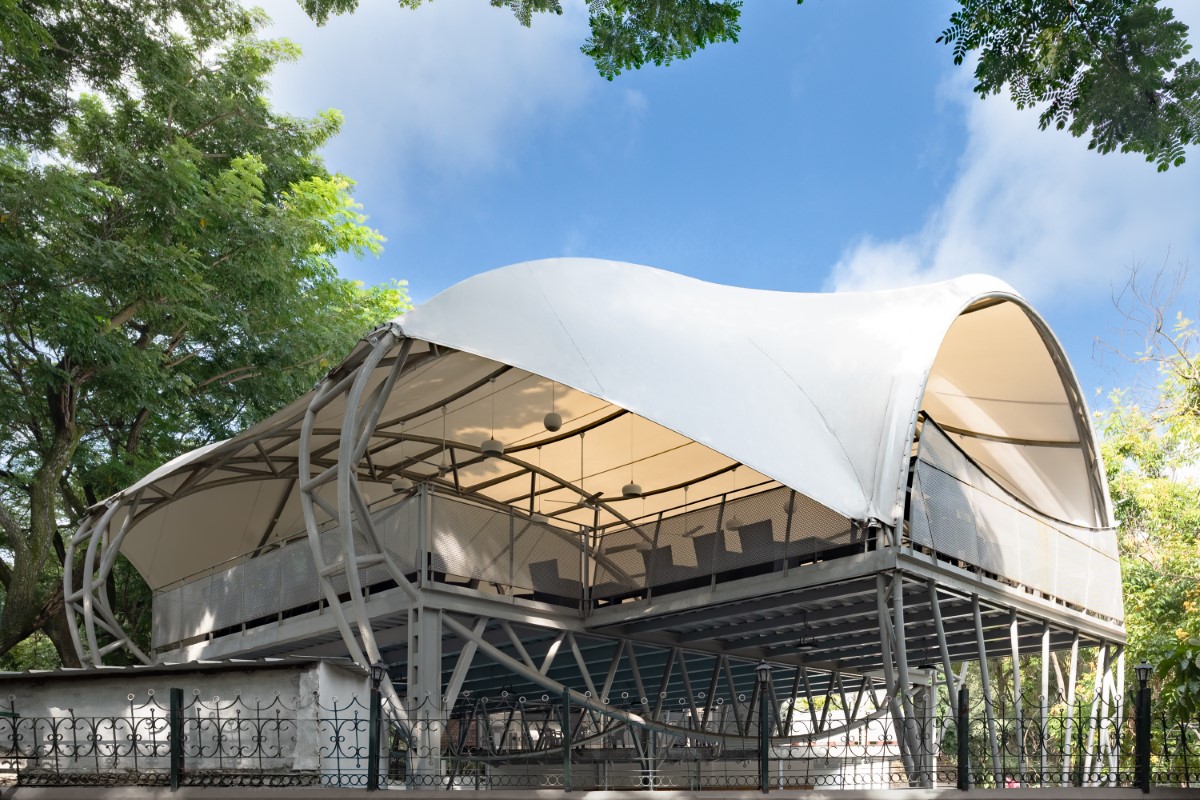
The Two-Court House by Samvad Design Studio is a 5,000 sq.ft, single family dwelling, on a plot of 2,720 Sq.ft. Located in a gated community in Bangalore, the design comprises of two compact masses in the west and east end of the site, housing all the private spaces. The central spine, a porous brick volume, flanked by two courts, hosts all the semi-public activities like living and family areas. As a response to climate, the West façade (front elevation) is blanked out, the South has only upper level openings to facilitate ventilation but reduce heat gain. The North façade is layered with brick screens for privacy, security as well as ventilation. How does one build in a gated community, is a query we have been trying to address. While we accept Habraken’s position that architecture should be designed as ‘fields’, integrating buildings with the urban texture and not as isolated ‘objects’, this has become a very challenging ask. Particularly, on occasions where project contexts are as banal as gated communities, giving rise to object making.
While we have been reflecting on how to potentially address this conundrum, in this case, the outcome was very much architecture as an object unto itself. Much of the process dwelt on constructing insular courts; walling off the neighbouring buildings and blanking out the front edge. Given the programmatic ask of the project (to build 5,000 sq.ft built up area with 5 bedrooms, a media room, 2 family rooms, a gym apart from kitchen-living-dining), the design was conceptualised in section, to achieve interconnectedness between levels. Split levels, multiple light wells with fenestrations which double up as shafts to carry the rising hot air out, all serve to increase internal connections and break the area into episodic volumes rather than rooms.
Drawings:




















